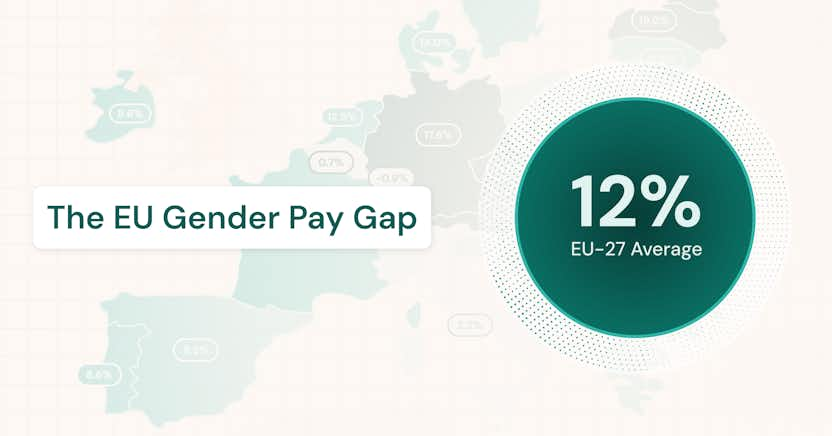Pay Transparency
What is pay transparency?
Pay transparency is the practice of openly sharing compensation-related information, such as salary ranges, bonus structures, and how pay decisions are made. Historically, compensation was a secret, often leading to pay inequities. In contrast, pay transparency fosters fairness and trust by providing clear, understandable information about how people are paid, which is now being driven by new legislation and employee expectations.
Why is pay transparency important?
Pay transparency is a strategic imperative for businesses. It improves talent acquisition by attracting candidates who value fairness and streamlines the hiring process. It also boosts talent retention by building employee trust and reducing turnover. Most importantly, it is a crucial tool for achieving pay equity, forcing organizations to address and correct unjustified pay gaps. Proactive transparency helps mitigate legal and reputational risks while building a strong employer brand.
Pay transparency laws aim to correct systemic issues in the labor market. A lack of transparency has historically resulted in pay gaps, particularly for marginalized groups. Global laws, like the EU Pay Transparency Directive and various U.S. state laws, are making transparency a legal requirement to combat these inequities.
Pay transparency is also a response to evolving societal expectations, as an increasing number of employees prioritize fairness and authenticity from their employers.
What are the different forms of pay transparency?
Pay transparency exists on a continuum of disclosure. The most common forms include:
- Salary range disclosure in job postings: Providing a pay range in job advertisements.
- Internal pay band and structure disclosure: Sharing salary ranges for different job levels and roles with current employees.
- Total rewards statements: Giving a comprehensive breakdown of an employee's full compensation package, including salary, bonuses, and benefits.
- Individual pay disclosure: A more extensive form that involves allowing or encouraging employees to discuss pay openly.
- Pay policy and criteria disclosure: Explaining the objective, consistent criteria used to determine pay, such as skills and performance.
What are common approaches to pay transparency: pros and cons?
Organizations can approach pay transparency in different ways:
- Incremental transparency: A gradual process of increasing disclosure, starting with job postings and moving to internal pay bands.
- Total rewards framework: Communicating a holistic view of pay, including all benefits. While this shows full value, it can be complex to explain.
- Structured compensation system: Implementing a system with job grades and pay bands, often supported by compensation technology. This provides a clear, defensible pay structure.
What are best practices for pay transparency?
Effective pay transparency requires a strategic approach. Key best practices include:
- Building a solid compensation foundation: Establish a clear, objective pay structure with grades and bands.
- Auditing for pay equity: Proactively identify and correct any unjustified pay gaps before disclosing information.
- Investing in compensation technology: Use a robust system to centralize data, automate audits, and manage a defensible pay structure.
- Training managers: Equip managers to have open, respectful, and fact-based conversations about pay with their teams.
- Communicating your pay philosophy: Clearly articulate the "why" behind your pay decisions and make this information accessible to all employees.
What are the risks of failing to implement pay transparency successfully?
A company that fails to implement pay transparency successfully may experience:
- Decreased morale and employee disengagement: This indicates that the transparency revealed unexpected or unjustified pay gaps.
- High turnover among high performers: Top talent may leave if they discover they are underpaid relative to the new, more visible pay structure.
- An increase in questions or complaints to HR: This suggests that the communication was unclear or the underlying pay structure is not perceived as fair.
- Difficulty in attracting new talent: Pay ranges that are not competitive will deter candidates.
- Internal friction and peer resentment: A lack of a clear rationale for pay differences can damage team cohesion.
Frequently asked questions (FAQs) about pay transparency
- What is the difference between pay transparency and pay equity? Pay transparency is the practice of sharing pay information, while pay equity is the principle of paying people fairly for similar work. Transparency is a tool used to achieve equity.
- How does pay transparency affect negotiation? It shifts the focus of negotiation from discovering a salary to discussing where a candidate's skills and experience fit within the published range.
- What is the EU Pay Transparency Directive? It's an EU law that requires employers to provide transparency on pay and to report on their gender pay gap to drive fairer pay.
- Can pay transparency harm employee morale? If implemented without a fair pay structure, it can reveal pay disparities and harm morale. However, when done correctly, pay transparency builds trust and engagement among employees.
- How do you determine a fair salary range for a role? A fair range is determined using both internal pay data and external market benchmarks from salary surveys.
- What is the role of technology in pay transparency? Technology centralizes compensation data, automates pay equity audits, and provides the tools to manage and communicate a defensible, transparent pay structure.
Summary
Pay transparency has become a business imperative for most businesses, as it is legally mandated in many states and countries, and is increasingly expected from employees. It is essential for attracting and retaining talent, ensuring legal compliance, and fostering a fair workplace. By building a solid pay structure, auditing for equity, and using technology, organizations can successfully implement a transparent approach to pay and gain a competitive advantage.






